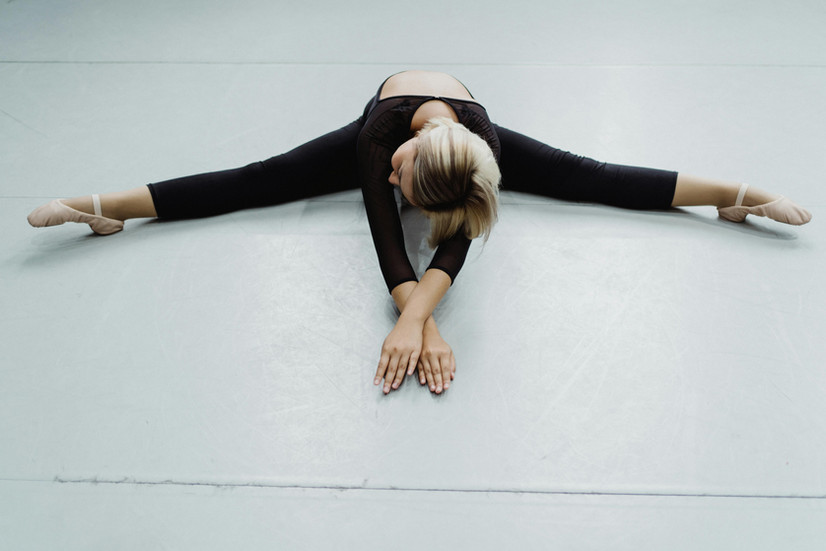Static vs. Dynamic Stretching: When to Use and Why?
- The Ballet Academy

- 3 days ago
- 3 min read
Stretching is a big part of every dancer’s routine, whether you’re warming up before class or winding down after. But not all stretches are created equal. Knowing when and how to stretch can make a huge difference in your flexibility, strength, and injury prevention.
Let’s look at the two main types of stretching: static and dynamic, and how to use each effectively.
What Is Static Stretching?

Static stretching means holding a position for a period of time, usually between 15 to 60 seconds, to lengthen the muscles.
Examples: Sitting in a straddle and reaching forward, holding a split, or a standing hamstring stretch.
These stretches are great for improving flexibility and releasing muscle tension. However, static stretches are best done after class or training, when your body is already warm. Doing them before class, when your muscles are still cold, can reduce strength and make you more prone to injury.
Tip: Think of static stretches as your cool-down time — a chance to relax your muscles and improve long-term flexibility.
What Is Dynamic Stretching?

Dynamic stretching means moving parts of your body through a full range of motion — repeatedly, with control and fluidity.Instead of holding a position, you move in and out of it, gradually increasing reach and speed.
These movements mimic the motions you’ll use during class, helping to activate muscles, increase heart rate, and improve joint mobility.
Best time to do dynamic stretching: Before class, rehearsal, or any physical activity. It’s the perfect way to “wake up” your body.
Examples:
Leg swings front and side
Walking lunges with reach
Half cobra pose. Gently press up and lower down to activate your spine and back muscles
Dynamic stretches prepare your muscles and joints for action by improving circulation, coordination, and neuromuscular connection, meaning your brain and body start working in sync.
Tip: Keep the movements smooth and controlled. The goal isn’t to stretch deeply, but to wake up the body and prepare it for dancing.
When to Use Which?
Key Takeaways
Think of dynamic stretching as your warm-up preparation and static stretching as your cool-down recovery.
Before dancing: Get your body moving and blood flowing — choose dynamic stretches.
After dancing: Help your body relax and lengthen — go for static stretches.
By using both strategically, dancers can improve performance, prevent injuries, and maintain healthy, flexible muscles that support long-term growth.










Comments